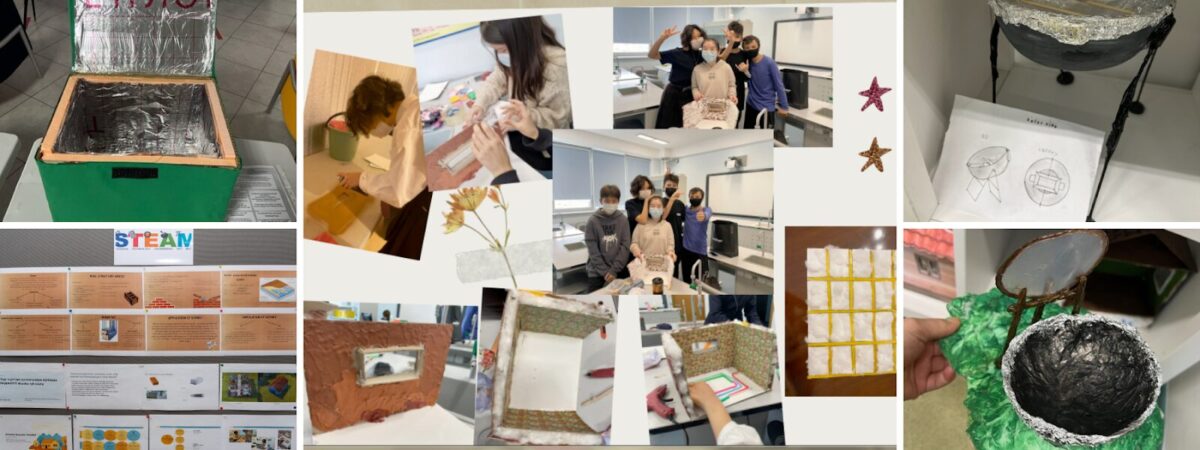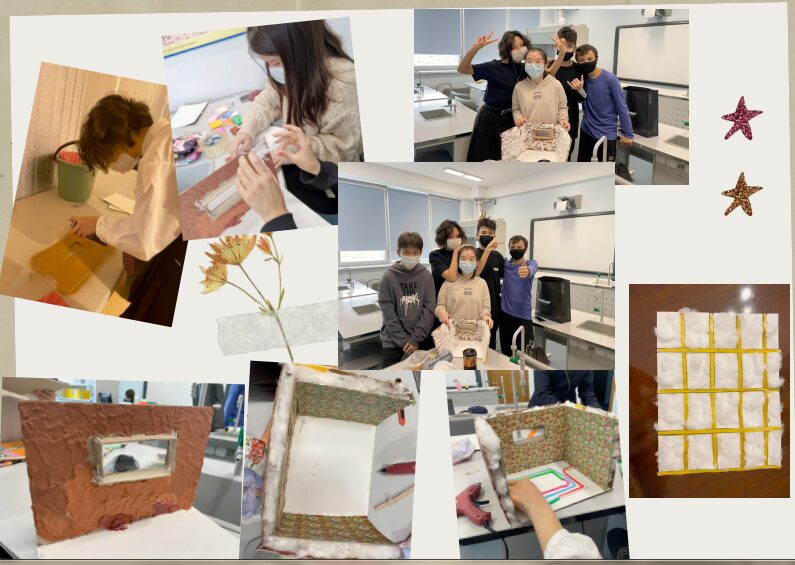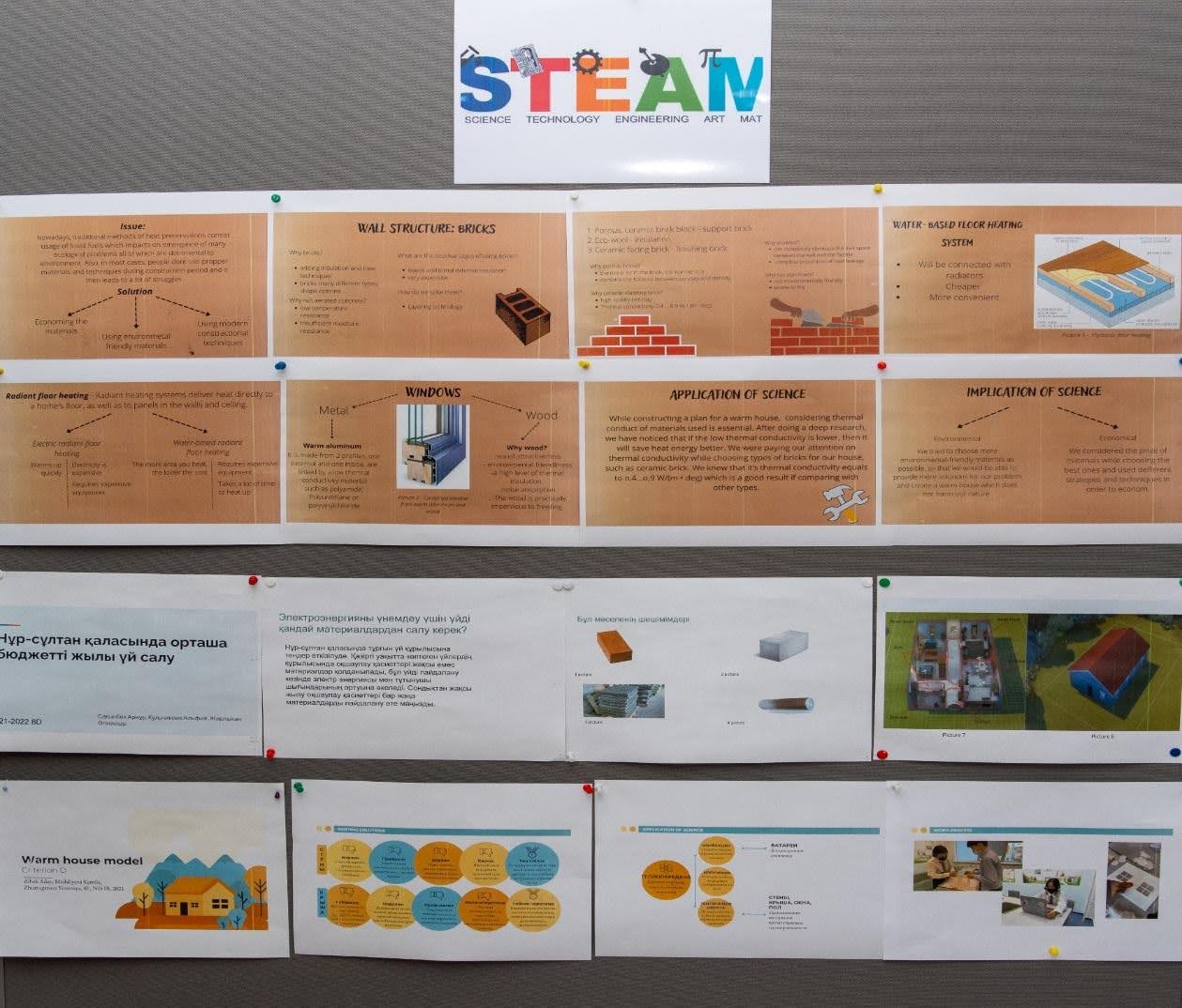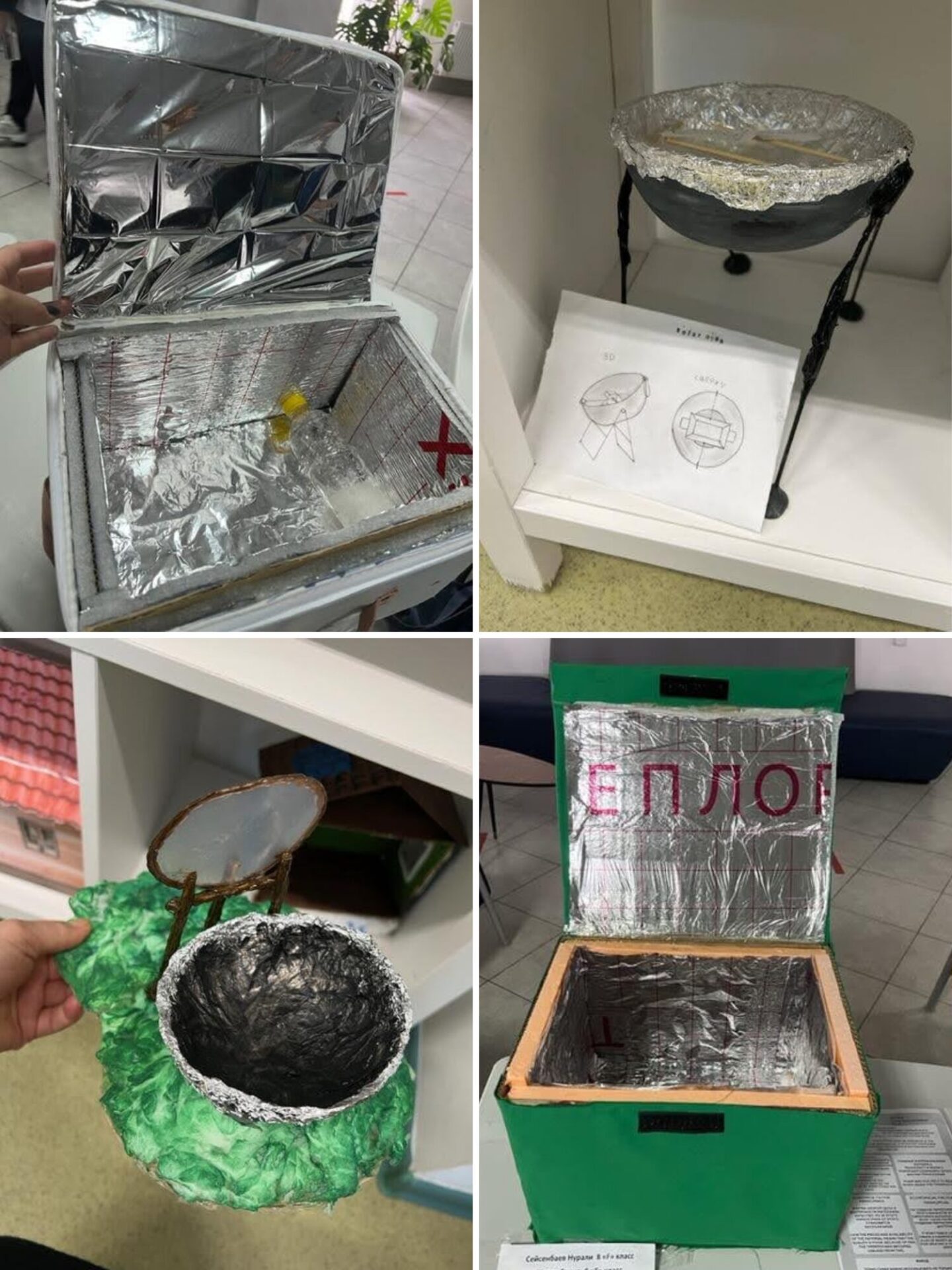
Countries that are addressing the need for more engineers to drive industrial growth have found that incorporating STEAM (Science, Technology, Engineering, Art, and Mathematics) projects into education significantly enhances students’ interest in engineering and technical fields. These projects not only spark curiosity about engineering but also inspire students to consider careers in science and technology.
Teaching science always leads to a search for new teaching methods and techniques that motivate students to become independent learners and creative thinkers. Transferring knowledge to students is not as important as developing the skills they will need in their everyday life. That is why the Republic of Kazakhstan’s education system is exploring and implementing new teaching methods and techniques, particularly through STEM education, to better prepare students for the challenges of the modern world.

Moments from the lesson
At our school, integrated science plays a key role in developing technical thinking among eighth grade students. Through practical tasks in integrated science, students build essential skills and mindsets required for future engineers. These tasks not only foster scientific knowledge but also encourage problem-solving and critical thinking, integral to engineering disciplines.
Opportunities for implementing STEM education can be found throughout our school, with STEM projects integrated into both regular classroom activities and extracurricular programs. These projects are an essential part of the educational experience, helping students develop hands-on skills and critical thinking abilities both during and outside of lessons.

Poster session
Our students participate actively in STEM conferences and scientific project competitions, and a school festival called InnFest where they present their own integrated projects and research products such as “Warm House,” “Music of science,” “Thermal bag,” and “Solar oven.”

Students’ projects
At our school, technical specialties are the most sought-after career paths for graduates, with information systems and technologies, electrical and thermal power engineering, mechanical engineering, and architecture being the most popular fields. Additionally, the number of students pursuing interdisciplinary areas, such as bioengineering, cybernetics, robotics, mathematical engineering, and nuclear chemistry, continues to grow each year. This shift reflects a growing interest in fields that blend multiple scientific disciplines, preparing students for emerging industries.
Based on our experiences and my own research, I have seen firsthand how an integrated approach to teaching physics, chemistry, and biology, combined with interdisciplinary learning and project-based activities, can play a crucial role in fostering students’ research and creative skills. This approach helps cultivate a lasting interest in technical sciences and encourages students to pursue careers in STEAM fields in the future. By emphasizing hands-on learning and problem-solving, students gain the foundational skills necessary for success in areas such as engineering, technology, and innovation.
Collaborate with colleagues: Work with teachers from other subject groups, for example, math, art, and social studies, and design projects that integrate content and skills from both fields. Team teaching can also create a rich learning environment. For example, in our school, we develop interdisciplinary units that are connected to physics and mathematics and solve main problems.
Create project-based learning experiences: Design hands-on projects that require students to apply knowledge from various subjects. For example, the project on renewable energy can incorporate science with energy concepts, from mathematics calculating efficiency to social studies with policy implications.
Encourage inquiry-based learning: Foster a classroom culture where students can ask questions and seek answers through research and experimentation. This approach promotes critical thinking and allows for exploration beyond traditional subject boundaries.
Use technology resources: Technology can connect students with experts and resources across disciplines through virtual field trips, online collaborations, and interactive simulations that can enhance the learning experience.
Focus on skill development and process skills like collaboration, communication, and problem solving: These are foundational in interdisciplinary work and can also be fostered by encouraging students to reflect on how these skills apply across subjects.
Assess interdisciplinary learning: Create assessment strategies that reflect interdisciplinary learning such as rubrics to evaluate knowledge application, and aspects such as teamwork and creativity.
Foster a growth mindset: Encourage students to embrace challenges and view failures as opportunities for learning, which is especially important in interdisciplinary projects where outcomes may be uncertain.
Invite community engagement: Engage with local organizations or professionals who work at the intersection of various fields. Their insights can provide real-world context and relevance.
Reflect: After completing projects, have students reflect on the learning process and outcomes. Use this feedback to continuously improve and adapt your interdisciplinary approach.
By creating a dynamic and interconnected learning environment, educators can inspire students to see the value in integrating knowledge from multiple areas, preparing them for complex, future challenges.